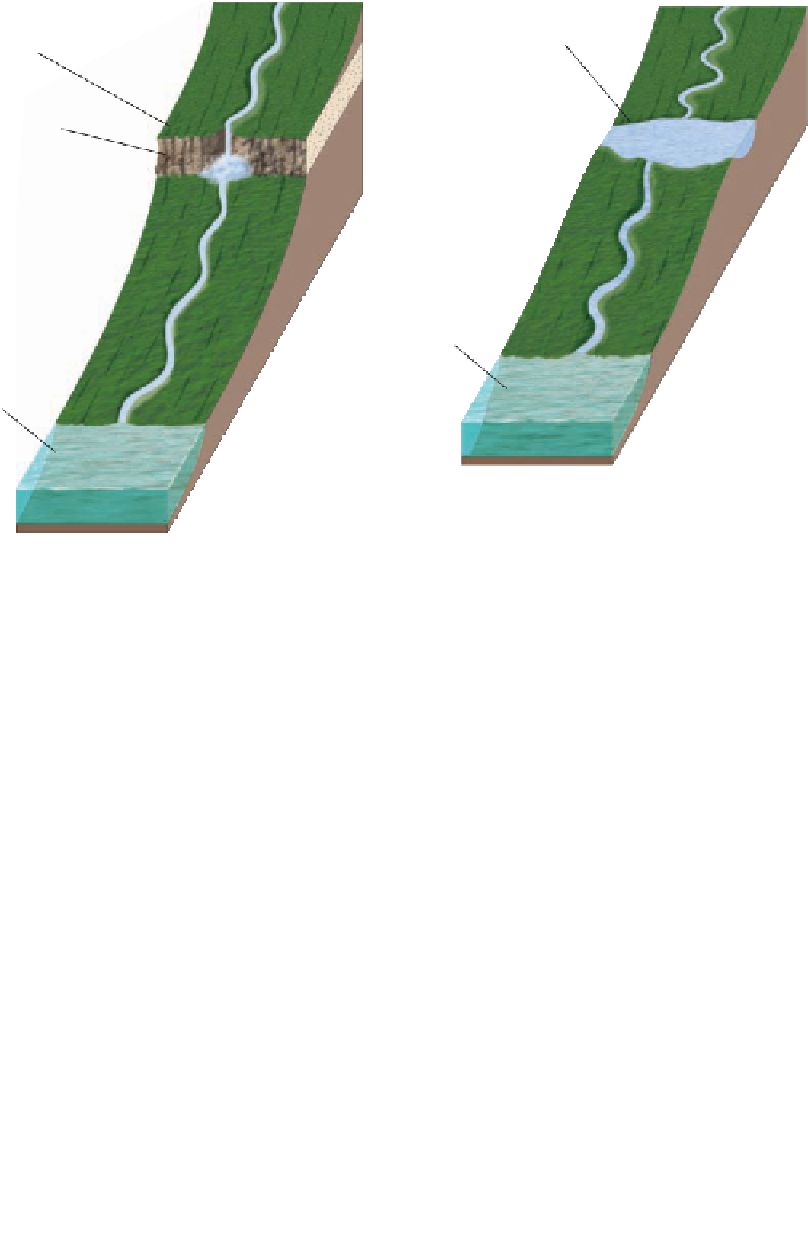Geology Reference
In-Depth Information
◗
Figure 12.20
Base Level
Local base
level
Local base
level
Rock resistant
to erosion
Ultimate base
level
Ultimate base
level
Sea level is ultimate base level, but a resistant rock
layer over which a waterfall plunges forms a local
base level.
Local base level where a stream fl ows into a lake.
a
b
◗
Figure 12.21
Local Base Levels
Local base
level
Lake (local
base level)
Dam
Stream profile
when lake exists
Deposition
Ultimate
base level
Ultimate
base level
Stream profile before
construction of dam
Graded profile of stream after barrier
impounding lake erodes away or is drained
a
A stream deposits much of its sediment load where it
fl ows into a reservoir.
b
Local base levels disappear as streams erode their beds into
graded profi les matching the ultimate base level.
effectively carry. Accordingly, the stream may respond by
deposition within its channel, which increases its gradient
until it is sufficiently steep to transport the greater sedi-
ment load.
◗
Figure 12.22
Longitudinal Profi les of Streams
Stream profile
Low areas on land known as
valleys
are bounded by higher
land, and most of them have a river or stream running
their length, with tributaries draining the nearby high areas.
Valleys are common landforms, and with few exceptions,
they form and evolve in response to erosion by running
water, although other processes, especially mass wasting,
contribute. The shapes and sizes of valleys vary from small,
steep-sided
gullies
to those that are broad with gently slop-
ing valley walls (
a
An ungraded stream has irregularities in its
longitudinal profi le.
Erosion
Erosion
Erosion
Deposition
Deposition
Figure 12.23). Steep-walled, deep valleys
of vast size are
canyons
, and particularly narrow and deep
ones are
gorges.
◗
b
Erosion and deposition along the course of a stream eliminate
irregularities and cause it to develop the smooth, concave profi le
typical of a graded stream.






























































Search WWH ::

Custom Search